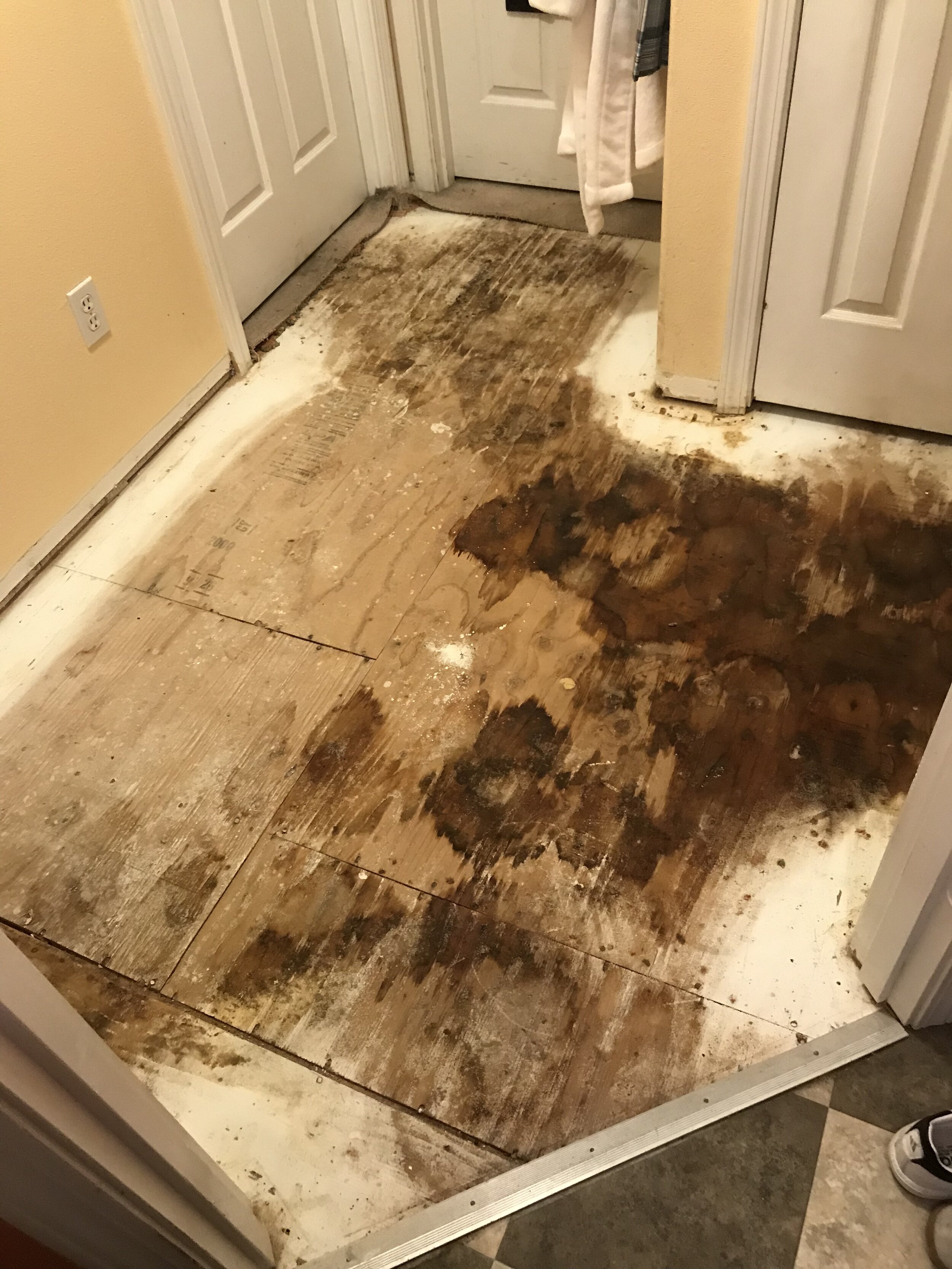Once Upon A Staircase (Part 3)
Having applied a cushion for what would be my new upstairs hall flooring, I landed on a solution for the actual surface. You can read all about my inspiration HERE and HERE. It turns out that not all floors have to come in a box marked “Floor”! Our Foremothers had no Home Depot, after all: Early floors were simply planks of wood, laying side by side. And many of them have remained in place for generations.
So I borrowed a truck from work, and initiated Operation Lumberyard. I scored a pile of 1 x 6 pine planks for about the price of a sweater’s worth of cashmere. Drunk with the power of hauling boards in a Big-Boy truck, I commenced laying my new floor.
It was still raining, so I turned the dining room into my wood shop. I measured for each board, trotted down the stairs, and cut each one with my mitre saw. The saw had to be situated on the dining room floor because I don’t have a stand for it. Which meant that I was on my hands and knees for all but the trip between stories. While both stupid and brutal, this arrangement meant that I was accidentally getting into possibly the best physical shape of my life.
Lumberyard pine planks are by no means refined. They are knotty, scratched up, uneven and warpy. Which means that in attaching them to the floor, sometimes I found that two edges failed to meet attractively. In a couple of cases, I simply could not muscle the boards close enough together. At which point a lightbulb went off: What I needed wasn’t brute force but leverage.
Enter my Honda Civic’s tire jack. I screwed a scrap of plywood down to act as a cleat, then put the tire jack between it and the misbehaving board and voila! I was able to crank the jack and force the warped member into position beside its neighbor.
Take that, warped floorboard!
My assistant approves.
And here she is in all her naked glory: My new hall floor! The feel of it underfoot and the delicious fragrance of sawdust were more than enough compensation for my aching joints and strained muscles. Oh and if you’re wondering, I attached the boards to the subfloor/underlayment with a nail gun, flooring adhesive, and the tears of my enemies.
The sexy bit of trim on the edge of the floor here is known as “stair nose”, and proved to be hard to source in pine that would match the floor, but source it I did, HERE. Thanks, Internet!
I performed the same witchcraft below, on the stair return.
Now Pine planks are notoriously soft, and feet are notoriously hard. I decided to lean into the inevitable damage and pre-distress my pretty new floor. It was a bit like making wool felt from perfectly good knitting: intentional damage is counter-intuitive to me, but I knew it was the best way to go for my situation.
I used a meat tenderizer, metal file, hammer and all manner of hardware to beat the tar out of the entire thing. In light of my emotional state at the time, it was pretty cathartic. I *may* have imagined it was not the floor, but a certain someone, to whom I delivered the beatdown.
After that part, I wavered a little before pulling the trigger on a stain color. I don’t know of too many black wood floors, but what the hell: Nothing in Moderation. And I’m so happy I went for the gusto. It’s dramatic, and rustic, and completely my own. I hit it with two coats of Minwax stain in “True Black”, and then three coats of old-school oil based polyurethane in Satin Finish. Knowing that the polyurethane will turn amberish-yellowish over time was a good reason to choose black stain. I’ve had more than enough of orange wood in my life (I’m looking at you, ugly-ass oak kitchen cabinets).
In addition to the yellowing issue, oil based polyurethane is more expensive, smelly and difficult to clean up than water based alternatives. And in my opinion, totally worth the grief if you never want to finish flooring again, which, it turns out, I do not. Whether I chose well or poorly will be revealed in the fullness of time.
You can still see the knots and grain of the wood through the stain and poly. The fact that it’s all beat up anyway freed me from worry that my poly finish wouldn’t be factory-perfect. Newsflash: It’s not.
Here you can see that in spite of the fact that I laid the planks as tightly together as I could, some pretty respectable cracks opened up as they dried. I knew that would happen, and it bothers me not. I think it adds to the rustic quality. And considering the state of things when I started, the improvement is drastic.
Please join me for the next installment, in which I sew a wooden skirt!

















